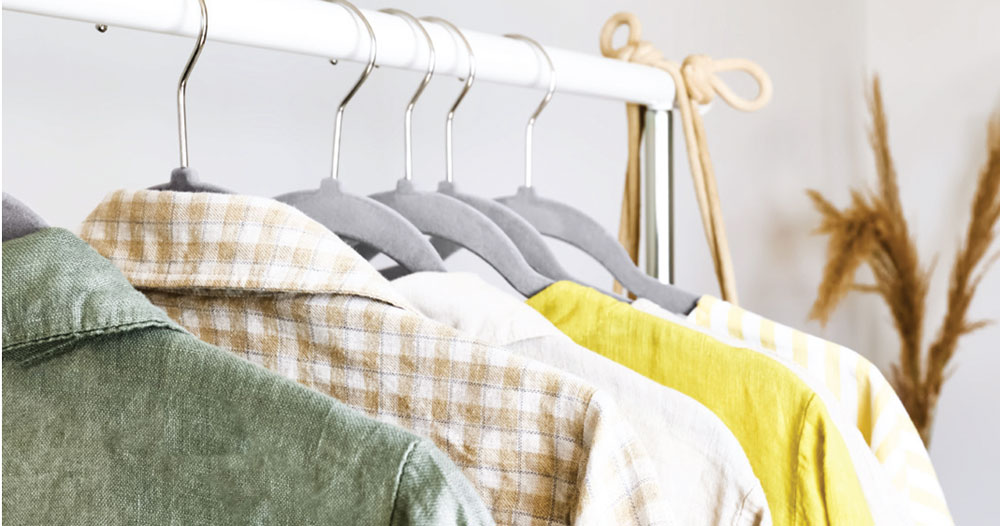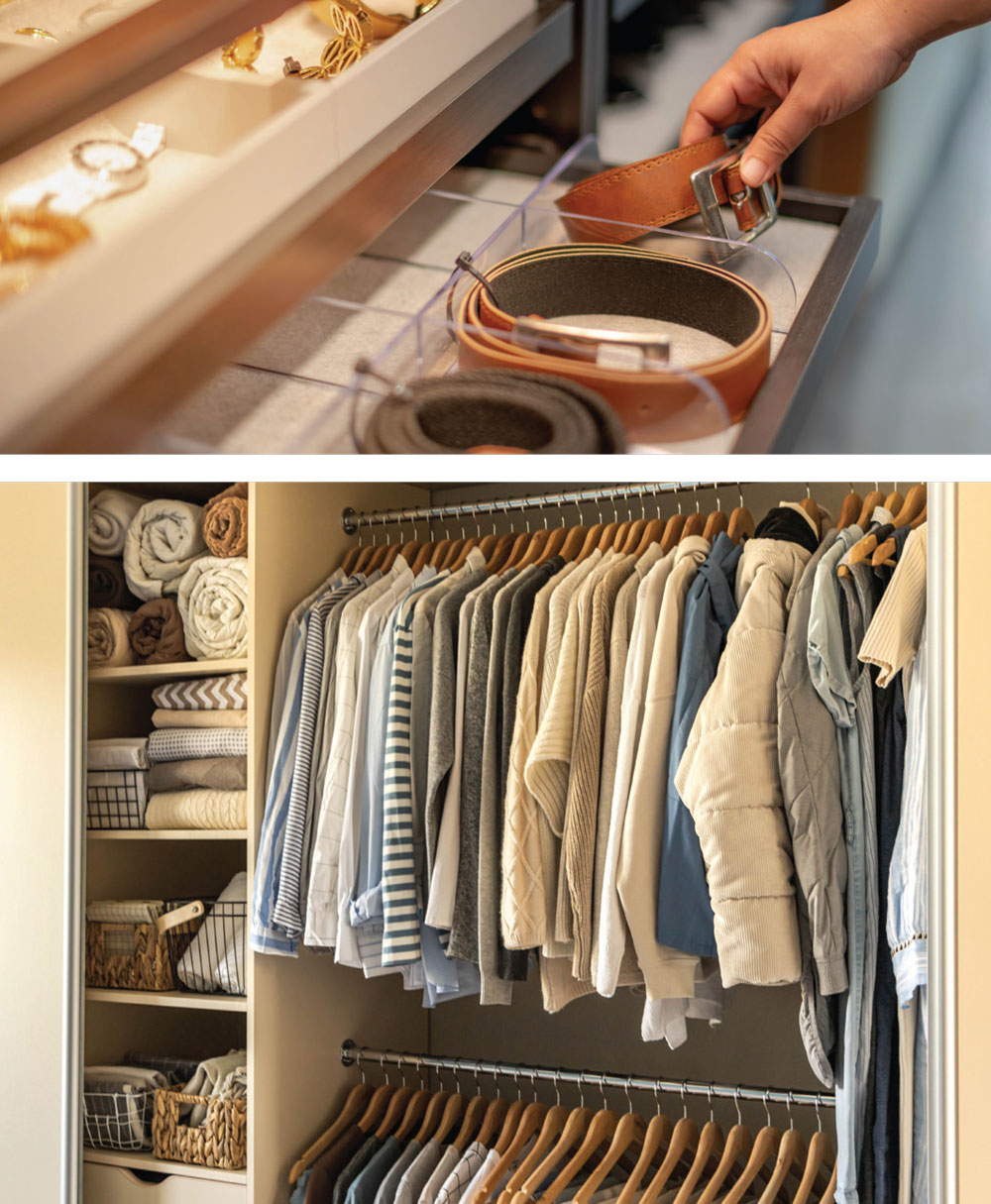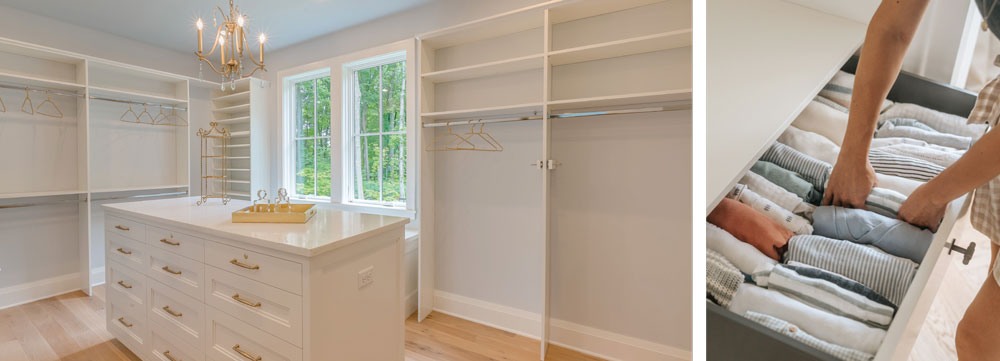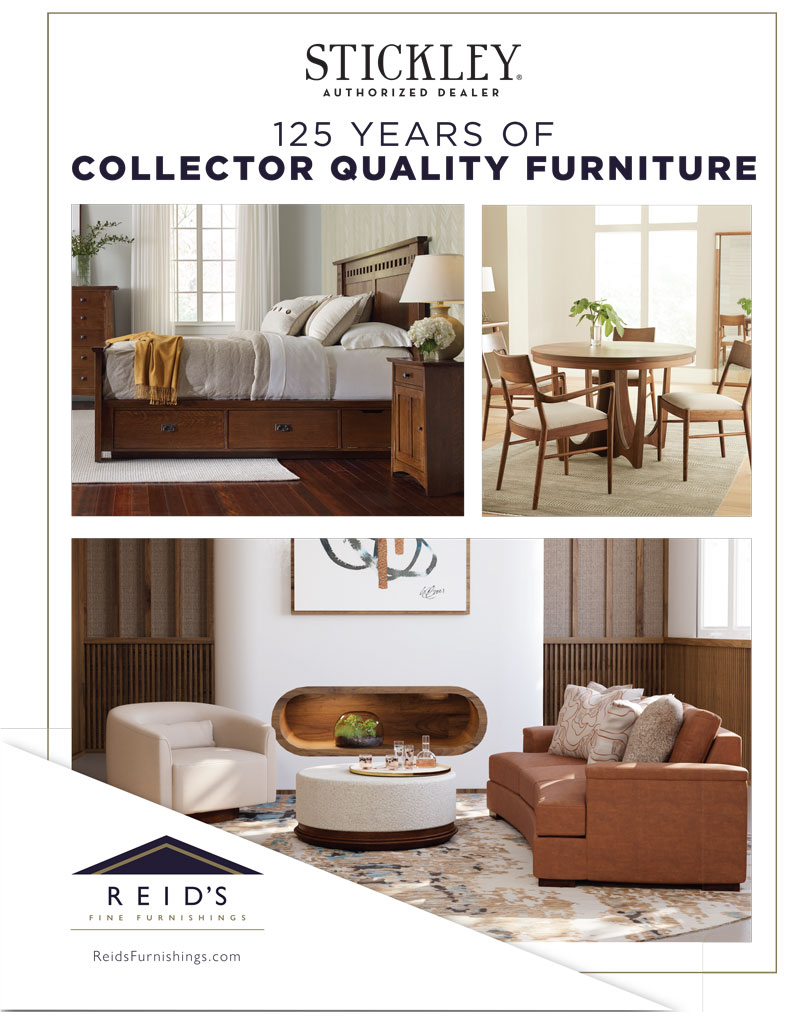CLOSET GOALS

Smart design tips for a tidy & functional storage space
Baskets, chests and armoires are some of the earliest versions of closets, dating back to Roman times. As industrialization happened across the world, people had greater access to more affordable goods and needed spaces in which to store them. In the 19th century, Americans established the closet as we know it — its own space built directly into the wall. These were small, usually the size of the door that opened into it.
Today, we are accustomed to larger fitted and walk-in closets in bedrooms. The standard size for a walk-in closet is typically 5 to 7 feet wide and 7 to 11 feet long. Larger luxury closets may range from 10 to 14 feet wide and up to 12 to 18 feet long. Modern Americans need (and expect) large closets. Closet size can even be a factor in a home purchase. According to a national survey by ClosetMaid in 2016, the average number of pieces in an American woman’s closet was 103, with 30 percent of it unwearable or never worn. The average male owns 74-84 articles of clothing.
Whether you have a modest-sized closet or a luxurious walk-in, investing some time in its organization will result in a tidy and functional space that will bring you pleasure and save you time when getting dressed. Spring is the perfect time to tackle a closet project, and it need not be a daunting task. Dealing with the contents first will allow you to address the structure second. Simple modifications with smart storage systems can help the overall flow of your closet. Professionals can also help customize closets and optimize structure by building shelves or installing drawers, essentially retrofitting an old closet.
The contents
The first step to any organization project is decluttering. Either pull everything out or go through every item in your closet and ask:
- Does this fit?
- Do I wear this regularly?
- Does this suit my current style?
- Is it in good condition?
Divide your items into three categories: keep, donate and discard. Take a cue from Marie Kondo: if it no longer sparks joy, it’s time to let it go. Likewise, if you haven’t worn it in years, it’s time to part ways. For donation tips, click here to learn about donating. If you share a closet with a spouse, it is advisable to do this together. People have different reasons for hanging on to things. You might make an assumption about that frayed button-down shirt that has sentimental value in your partner’s eye.
The second step is to categorize and group in ways that make sense to you. Some simple groups are tops, (blouses and T-shirts), bottoms (jeans and trousers), skirts, dresses, outwear and accessories. Some people like to take it a step further and implement a color-coding system starting with light colors and gradually moving to darker shades.
The structure
The easiest way to immediately transform a closet? Invest in coordinating hangers; they eliminate visual clutter in your closet and help save space. Velvet hangers, in particular, are super slim and take up half the room their bulky wooden and plastic counterparts do.
Next up, maximize your space with smart storage solutions. For example, use vertical space by installing wire shelving to store folded clothes or sweaters. Use hanging organizers for shoes. Drawer dividers keep things like socks, lingerie and accessories neatly separated. Hooks and pegs are good for belts and bags. If you have a lot of short items like shirts and skirts, an extra hanging rod will double your space. Conversely, if you have primarily longer pieces and double hanging rods, remove the bottom one.
If you need to customize your closet further, look for a reputable closet organization company and schedule a consult. A closet designer will visit your home, measure the space, discuss your needs and produce a design. The system is then installed by professionals and comes with a warranty.
Under new ownership, Closet Storage Organizers is a family-owned business serving the Roanoke Valley. Dave and Jill Reilly, a husband-and-wife duo with roots in the Roanoke/Salem community, pride themselves on bringing “heart and hospitality” to their projects. Dave visits the home first to do the measurements and get a feel for the customer’s general vision. Then he turns it over to Jill, who handles the design process.
“I typically send a detailed questionnaire that gives me important information about the clothes in their closet, how they use their closet and what additional things they may want to include (like hamper, ironing solutions, jewelry or watch storage or even safes),” says Jill. At this point they will make a CAD drawing, and with approval, will begin the installation.
According to the Reilly team, a well-organized closet is heavy on double hang space and adjustable shelving and light on single, long hanging rods. Classic closet organizing mistakes that they see are not organizing clothing by length/type, storing all seasons of clothing in the same space and keeping things that no longer suit their style or size.
“A well-organized closet can really simplify your life,” says Dave. Some popular low budget items their customers like are combo units (wire hanging and laminate towers), adjustable wire and slatwall for maximizing narrow spaces. Splurge items include tilt-out hampers, jewelry drawer inserts and pull-out rotating mirrors.
With organization and a bit of thought, your closet can serve you better. Spring is a great time to tidy up! ✦
CAD, closet designer, closet organization, color-coding system, custom closet systems, decluttering, discard, donate, keep, smart storage systems, Storage space










